The role of systems engineering in the development of the ZEISS thermal imaging camera and why it is also glue that holds project together.
The second part of ZEISS’ series of articles on the development of the ZEISS DTI 3 thermal imaging camera looks at system engineering. In this context, the product development process can be roughly divided into three stages: the design or pre-development stage, the main development stage, and the post-development stage. We are taking a look behind the scenes at the people behind the individual departments who are involved in the process of developing the ZEISS DTI 3.
In this interview, Christoph Stark (system engineer and technology expert thermal imaging) and Florian Grimminger (system engineer for optics) explain the different stages of the process in system engineering and elaborate on what it means to be involved in the development of a product from an engineering perspective.
In the last article, we learned about the work of the category management. How does system engineering fit in here? Christoph, why don’t you give us a brief overview of the work of a system engineer?
Christoph: “Roughly speaking, a system engineer ensures that a product has the desired technical features. This process can essentially be divided into three stages. First, there’s the design stage, otherwise known as pre-development. In this phase, category management has already done the groundwork, carried out the relevant research, and identified key consumer requirements. System engineering’s job is now to determine from a technical perspective whether these needs can be implemented technically during product development.
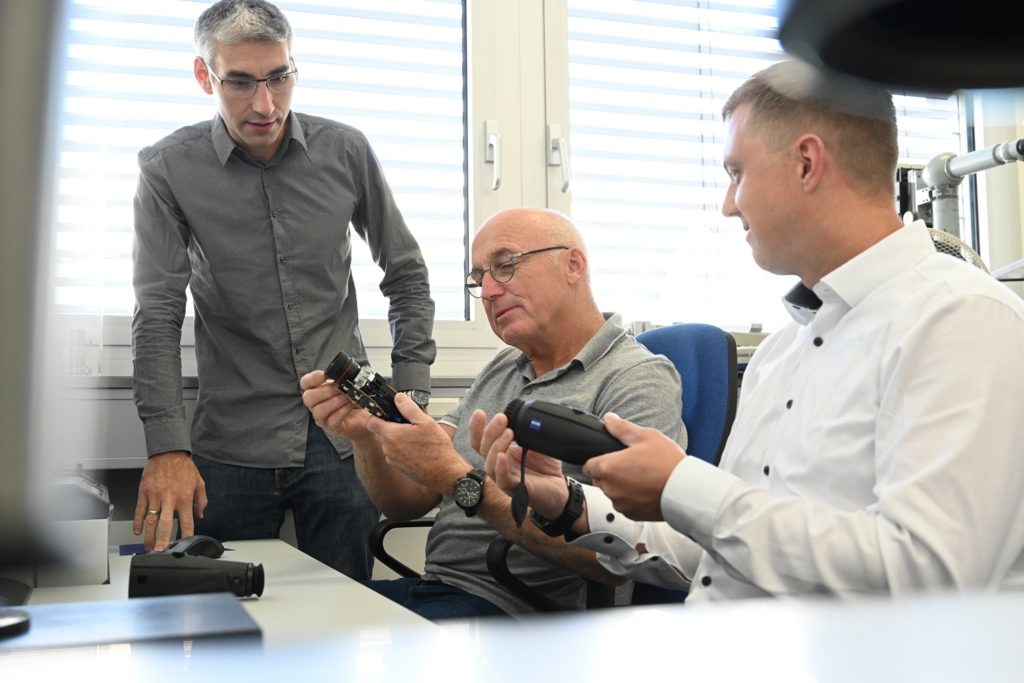
You can think of this just like going through a wish list. Consumer needs include measurable and non-measurable properties such as detection range, width of field of view, operating concept, and usability. Based on these desires, the system engineer then drafts a concept of how these technical features can be implemented in the product.
For example, it was a requirement with the ZEISS DTI 3 that the front lens cover should be easy to replace, ideally by the consumer himself. We then weigh several options on how best to accommodate this request.
We primarily act as an interface between the various specialist departments. Whether it comes to the mechanical, electronic, or optical components – in product development, all the technical milestones pass through system engineering so that, in the end, we can release a superior product to the market. Finally, we design a prototype in collaboration with our colleagues and then put it through its paces.”
And what comes after the design stage? Florian, why don’t you briefly describe what this stage looks like and what role you play here as system engineering?
Florian: “Absolutely. A system engineer’s work isn’t over once the design stage is complete. We have the overall technical responsibility for the product development.
In the next phase, the main development stage, we flesh out the rough concept into a detailed technical solution. We need to work very closely with our colleagues from the specialist areas such as optical and mechanical design as well as electronic and software development.
During the main development, the system engineer’s job is to keep track of the technical results, evaluate them and, in the event of problems, work with colleagues from the various specialist departments to find the best possible solutions.
In other words, we connect the individual fields of expertise and cover the interfaces and gaps. We’re kind of like the glue between the departments to hold everything together from a technical perspective.”
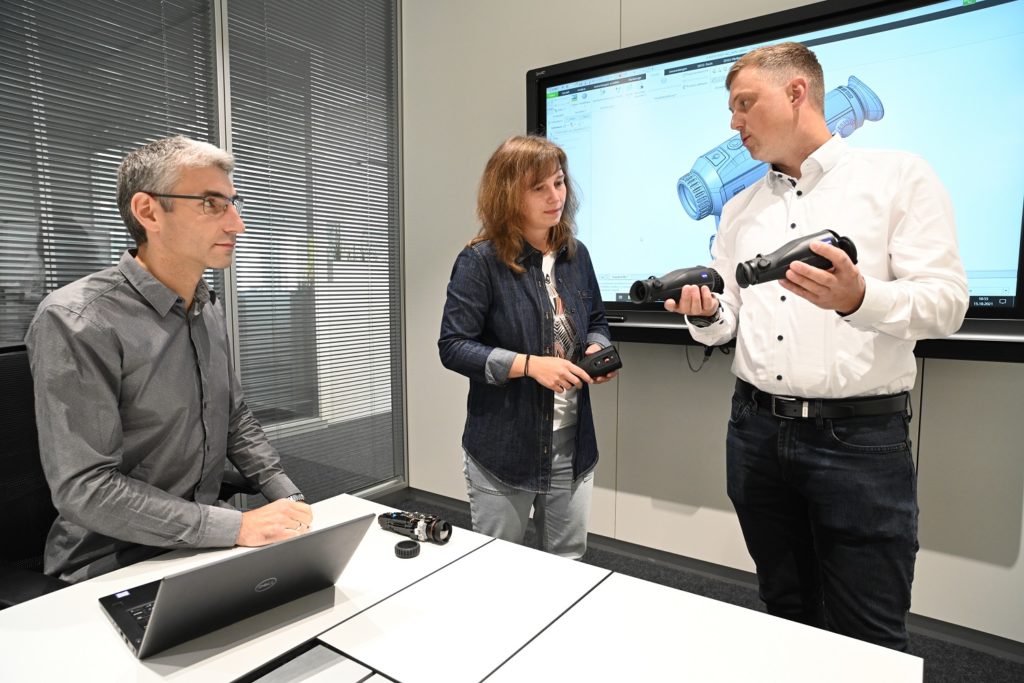
The last stage takes place after product development is completed. Even at this point, system engineering still plays an important role. What does your work look like at this point?
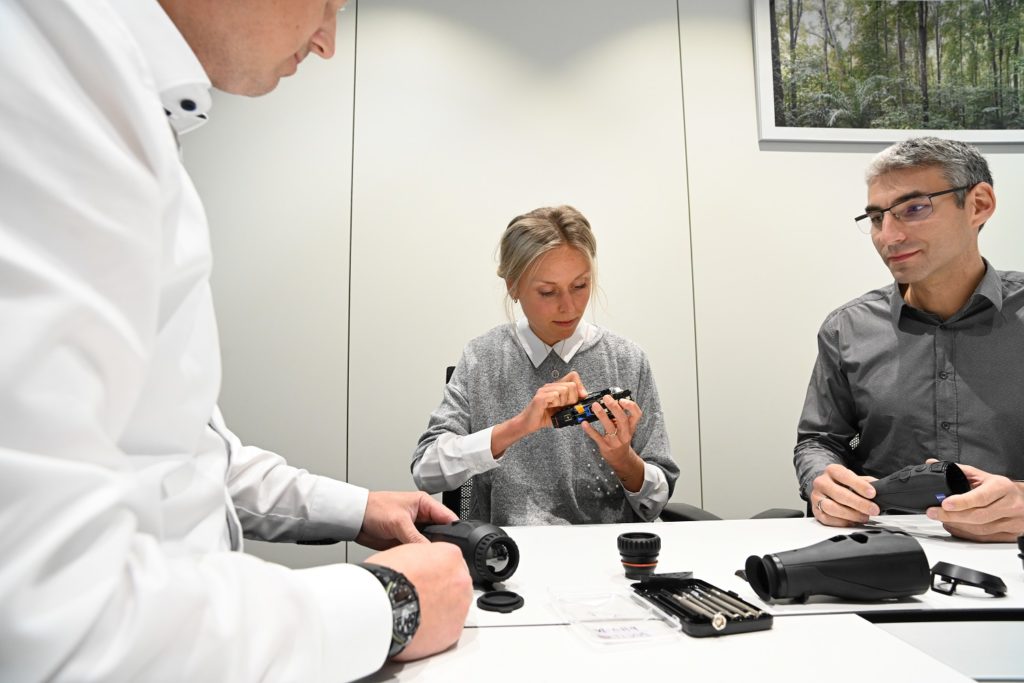
Christoph: “That’s right, we accompany the product from the initial idea to the consumer, always focusing on its technical aspects. This also includes a strong collaboration with the service department. For example, we disassemble a prototype together early on during the design phase, to uncover possible service cases and their repair feasibility. In addition, we also support the ZEISS service department after development when particularly complex or technical service requirements come up.”
And what was your specific contribution to the ZEISS DTI 3/35 and DTI 3/25 thermal imaging cameras? Why is the work of a system engineer so critical to the development of the DTI 3?
Florian: “In order for this interdepartmental collaboration to turn into a genuine ZEISS product, the highest standards in all aspects is a must! Particularly due to how highly interconnected the individual fields are, it is crucial that system engineering continuously monitors and coordinates the technical milestones during the development process.”
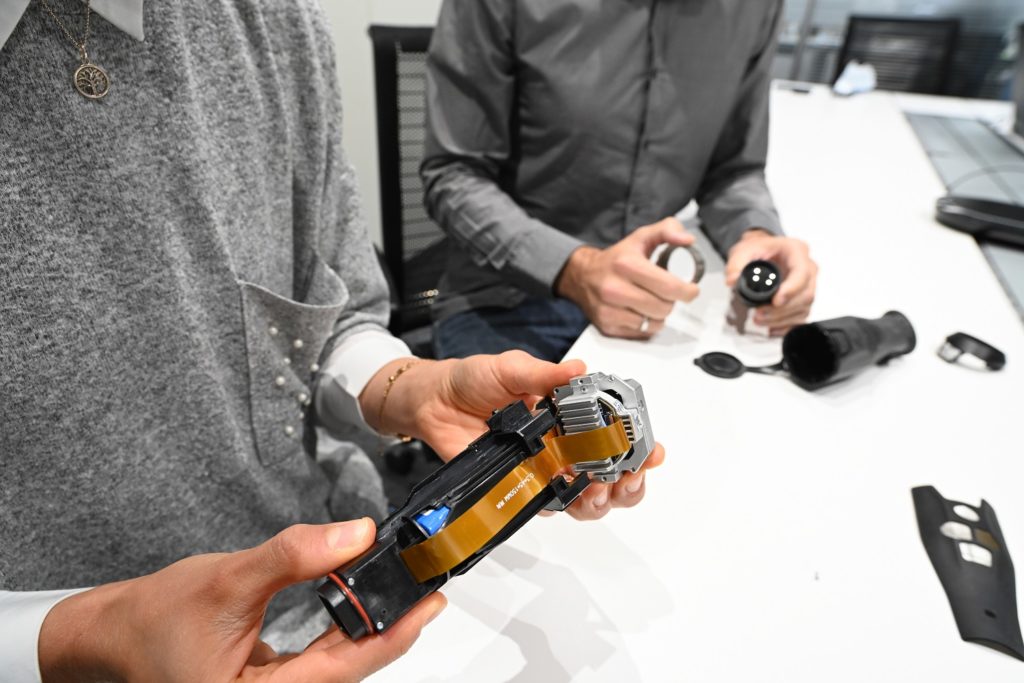
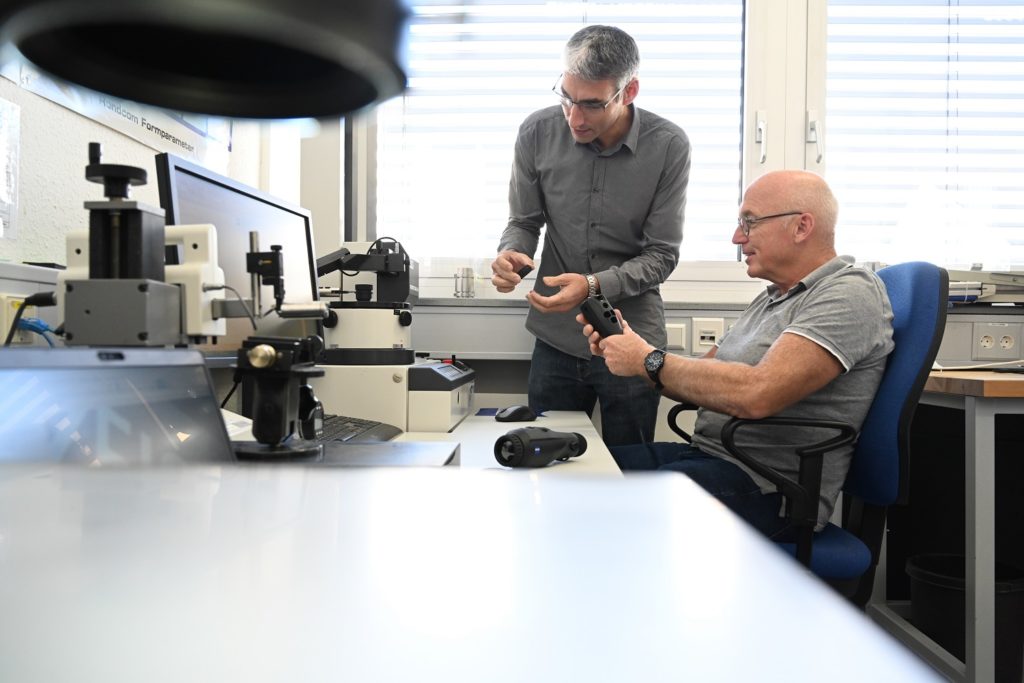
What distinguishes the ZEISS DTI 3 family from other thermal imaging cameras on the market?
Christoph: “When developing the DTI 3, special emphasis was placed on usability, and the consumer was thus the focus of the development. Based on research by Category Management, for example, the operation and ergonomics of the device is particularly important! That is why the ErgoControl concept was developed. System engineering also needs to focus on technical feasibility and ensure that the device is safe and that we comply with all legal requirements. We also pay attention to many small details, such as the choice of materials for screws, which are not immediately visible or noticeable but will create a perfect product and outstanding product experience.
In the next part of our series, we provide an insight into the extensive laboratory and field tests of the ZEISS thermal imaging camera…